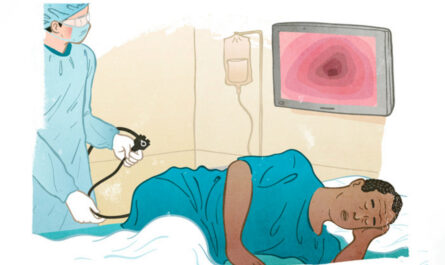Clostridium difficile, commonly known as C. difficile or C. diff, is a bacterium that can cause life-threatening infection in the colon. With rising rates of antibiotic resistance, C. diff infections have become increasingly difficult to treat. This article explores current methods for diagnosing and managing C. diff infections.
Diagnosing C. difficile Infection
C. diff bacteria release toxins that can cause inflammation of the colon, known as colitis. Symptoms of C. difficile infection include diarrhea, fever, loss of appetite, and nausea or abdominal pain/tenderness. Diagnosis begins with suspicion of infection based on symptoms and recent antibiotic use. Stool tests are then used to detect the presence of C. diff toxins or genetic material.
The most common diagnostic tests are cell culture cytotoxicity assay, enzyme immunoassay (EIA) for toxins A and B, and nucleic acid amplification tests (NAATs). Cell culture cytotoxicity is highly accurate but takes 1-2 days for results. EIA and NAATs can provide results within one day but may be less sensitive. Laboratories may use a two-step algorithm involving EIA followed by NAAT for confirmation. It’s important to use accurate diagnostic testing to properly identify C. diff infections and avoid unnecessary treatment.
Treating Initial C. difficile Infections
For most first episodes of non-severe C. Difficile Infection, metronidazole or vancomycin are recommended as primary treatments. Metronidazole comes in pill or intravenous form, while vancomycin is administered orally as capsules or solution. Both work by inhibiting bacterial growth and are completed in 10-14 days. Clinical cure rates are similar at 70-90% for metronidazole and 85-95% for vancomycin.
Factors such as infection severity, patient age, and recent surgery/hospitalization help determine first-line treatment. Patients with severe or fulminant C. difficile colitis usually require intravenous metronidazole followed by oral vancomycin once symptoms improve. Treatment may be extended to a 28-day tapering course for recurrent or refractory infections. Probiotic supplementation during and after antibiotic therapy may help restore healthy gut flora balance.
Managing Recurrent C. difficile Infections
Approximately 25% of patients treated for C. difficile infection will have one or more recurrences after completion of antibiotic therapy. Risk is highest in the two months following initial treatment but declines over time. Additional antibiotic treatment with either oral vancomycin or fidaxomicin is recommended for first recurrences.
Fidaxomicin is a newer macrocyclic antibiotic associated with slightly lower recurrence rates of 15-20% compared to 20-30% for vancomycin. Bezlotoxumab, a monoclonal antibody against toxin B, was approved by the FDA in 2016 as an adjunctive treatment to reduce recurrences when added to standard antibiotic therapy. Other investigational options for recurrent C. difficile infections include fecal microbiota transplantation (FMT), which involves transplanting healthy donor stool into a patient’s intestine to restore normal gut flora.
Preventing C. difficile Infection Spread
As C. difficile spores can persist on hospital surfaces for months, preventing spread through proper environmental cleaning and infection control practices is critical. Isolation of infected patients, use of private rooms when available, along with strict hand hygiene by healthcare staff are recommended. Gloves and gowns should be worn when entering an isolation room of a C. diff patient and disposed of properly before leaving the room.
Thorough cleaning and disinfection of rooms and equipment associated with infected patients is also essential using an EPA-registered sporicidal disinfectant. Reducing unnecessary antibiotic use and promoting antibiotic stewardship within healthcare facilities further aids prevention by reducing risks for C. difficile infection to develop. With a combination of accurate diagnosis, effective treatment and management of recurrences, as well as proper infection control, the growing threat of C. difficile can be combatted. Ongoing research continues seeking new therapeutic and preventive strategies to curb this increasingly resistant pathogen.
In summary, this article has provided an overview of current methods for diagnosing and treating Clostridium difficile infections through various stages from initial episodes to recurrent cases. Understanding diagnostic testing options and importance of accurate identification was discussed. Standard and new treatment approaches for managing differing levels of severity were explored. The roles of prevention through environmental disinfection, isolation protocols and antibiotic stewardship in healthcare settings were also highlighted. With a multi-pronged approach, the medical community works to curb the impact of this potentially deadly healthcare-associated infection.



